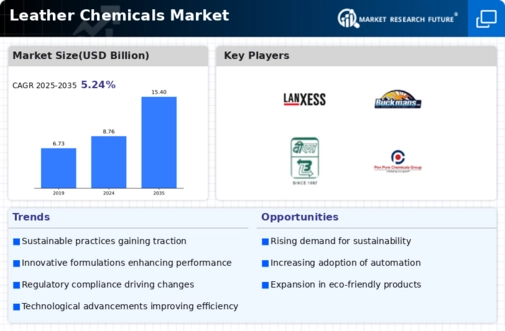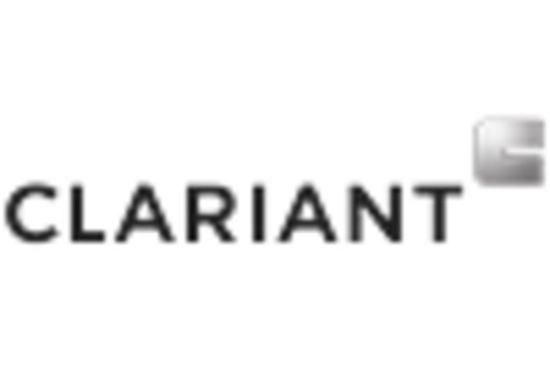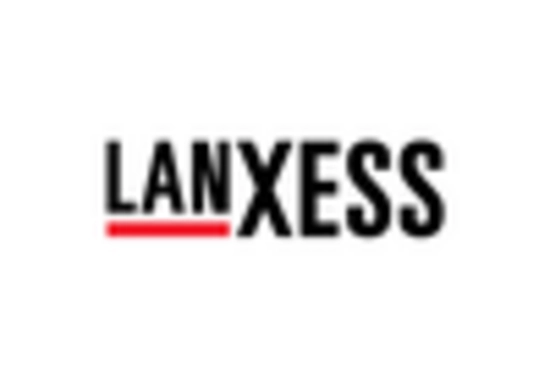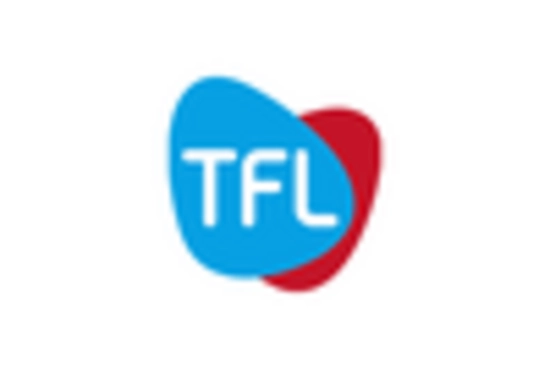Expansion of Footwear Industry
The footwear industry is a significant contributor to the Leather Chemicals Market. As fashion trends evolve, there is a growing demand for stylish and durable leather footwear. The Leather Chemicals is expected to expand at a compound annual growth rate of around 6% in the coming years. This growth is driven by factors such as urbanization, changing lifestyles, and increased consumer spending on fashion. Consequently, the demand for leather chemicals used in the production of footwear is likely to rise. Manufacturers are increasingly seeking high-performance chemicals that enhance the quality and longevity of leather footwear, thereby driving the Leather Chemicals Market.
Growth of the Automotive Sector
The automotive sector plays a pivotal role in driving the Leather Chemicals Market. With the increasing use of leather in vehicle interiors, the demand for high-quality leather chemicals is on the rise. As automotive manufacturers seek to enhance the luxury and comfort of their vehicles, the incorporation of leather upholstery has become a standard feature. Reports indicate that the automotive leather market is projected to grow at a rate of approximately 4% annually. This growth is likely to spur demand for specialized leather chemicals that meet the stringent quality and safety standards of the automotive industry, thereby propelling the Leather Chemicals Market.
Rising Demand for Leather Goods
The increasing consumer preference for leather products is a primary driver of the Leather Chemicals Market. As disposable incomes rise, particularly in emerging economies, consumers are more inclined to invest in high-quality leather goods, including footwear, bags, and apparel. This trend is supported by a growing appreciation for the durability and aesthetic appeal of leather. According to industry reports, the leather goods market is projected to grow at a compound annual growth rate of approximately 5% over the next few years. Consequently, this surge in demand for leather products directly influences the need for leather chemicals, which are essential in the tanning and finishing processes, thereby propelling the Leather Chemicals Market forward.
Sustainability and Eco-Friendly Practices
Sustainability has emerged as a crucial factor influencing the Leather Chemicals Market. With increasing awareness of environmental issues, manufacturers are adopting eco-friendly practices in leather production. This shift includes the use of biodegradable chemicals and sustainable sourcing of raw materials. The market for sustainable leather is expected to witness substantial growth, with projections indicating a potential increase of over 10% in the next five years. As consumers become more environmentally conscious, the demand for leather products that utilize sustainable chemicals is likely to rise, thereby driving the Leather Chemicals Market. Companies that prioritize sustainability may gain a competitive edge, further enhancing their market position.
Technological Innovations in Leather Processing
Technological advancements in leather processing are significantly impacting the Leather Chemicals Market. Innovations such as automated tanning processes and the development of synthetic alternatives to traditional leather chemicals are reshaping the landscape. These technologies not only improve efficiency but also reduce waste and environmental impact. For instance, the introduction of waterless tanning methods has gained traction, potentially reducing water usage by up to 90%. As these technologies become more mainstream, they are expected to enhance the quality and appeal of leather products, thereby stimulating demand for leather chemicals. The integration of technology in production processes is likely to be a key driver for the Leather Chemicals Market in the coming years.

















Leave a Comment